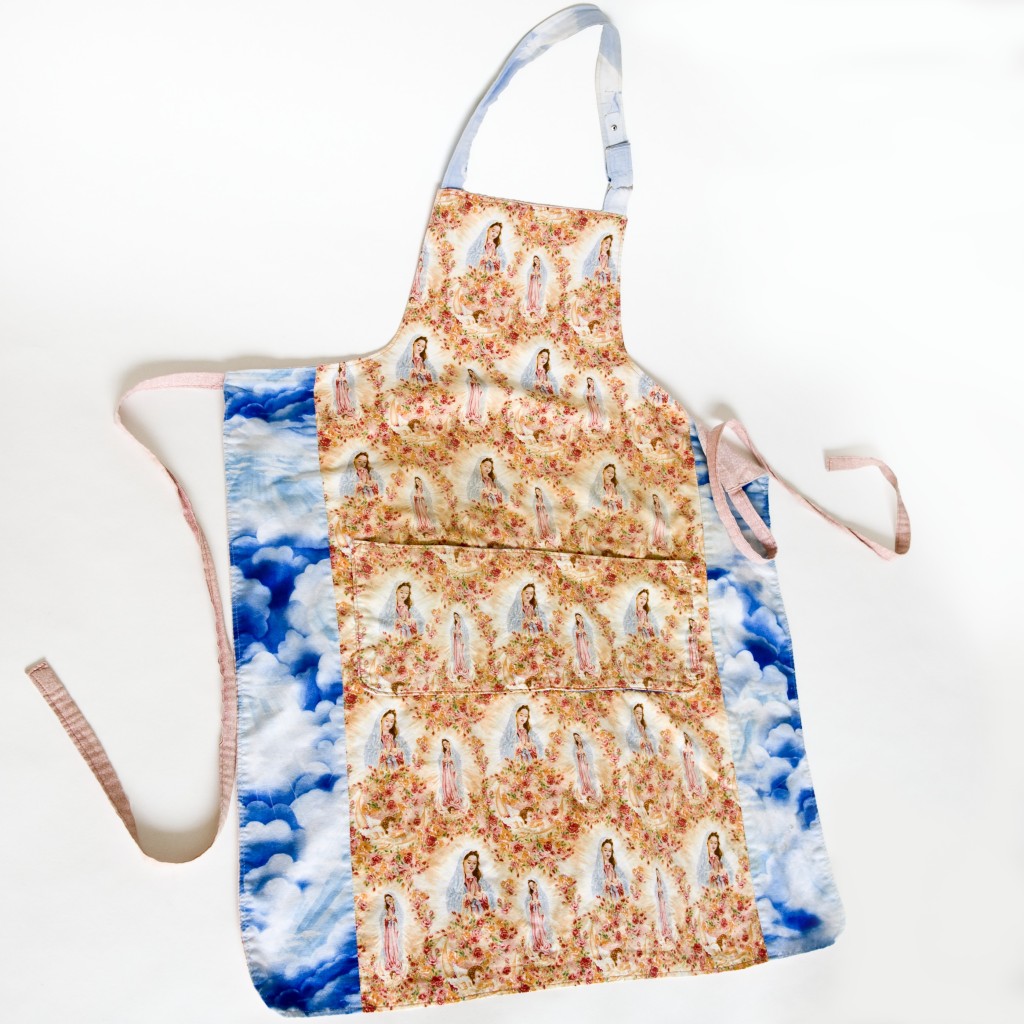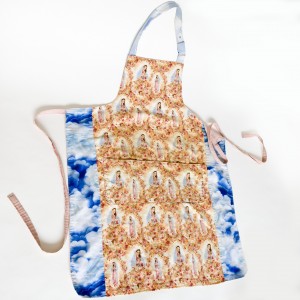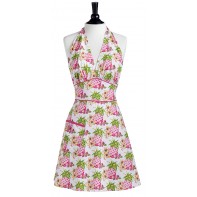Friends.
Something about this precocious Parisian spring, rich in creative impulse, has made me unearth my Apron Manifesto and post it here, once again. I remain a firm practitioner of the apron. Here is why.
THE APRON MANIFESTO
Though I set my first novel in the fashion world, my interest in couture is largely metaphorical. I would be hard pressed to distinguish a Christian Lacroix from a Christian Dior and have not bought a fashion magazine in years. What appeals to me is fashion’s appetite for outlandish excess and for marrying the absurd with the sublime. I had the pleasure of practicing my fashionese when I wrote Remedy and this experience was not unlike reading Alice in Wonderland where one enters of world of queer pairings and alliteration, where the associative and the excessive poke their tongue at reason.
Despite the conformity of mass produced ready-wear, fashion craves and inspires fancy much as fairy stories do. Karen Blixen, the great writer of gothic tales, gave a name to each of her dresses and I suspect this whimsy of the wardrobe served to remedy the doldrums and repetition of getting dressed in the morning. Inside her closet hung a cast of friends who came to life once pulled over her head and zipped up her back. Following Blixen’s example, I once tried to christen a dress. It had kimono-style sleeves and touches of African wax. The sacrament was swift and easy to administer: I called it –rather appropriately I thought – Akiko Wemba and wore her to a fête the very evening of her baptism. Though cleansed of original sin, by nine p.m. after a debouched sojourn at the buffet table, she was ruined by indelible, oily splotches on the bodice. Deviled eggs were the culprit. Akiko Wemba died an early death but I find comfort in my belief that she now occupies a hanger in purgatory’s closet.
As the risk of sounding reactionary, I confess a longing for the uniform if only to simplify the daily what-to-wear problem. I have in mind a self-appointed, self-fashioned uniform, along the lines of what my character Remedy cooks up. Hers involved doing something wonderful to a Led Zepplin belt buckle but yours can be whatever you want it to be. What’s important is to be creative and to stick to it. Uniforms are easy – no thought is required once they are conceived – but relentless; they gain meaning through constancy and therefore must be worn every day, with the exception of weekends and holy days.
I keep my own uniforms in a kitchen drawer: five aprons, one for each day of the work week. Understandably, I do not wear them outside of the house. What may appear less understandable is that I don’t wear them in the kitchen either. These aprons are reserved for writing. I fell into the habit of wearing them at the desk by chance: one morning I arrived at my work post in apron because I had forgotten to remove it after washing the breakfast dishes. This kept happening and I didn’t fight it. The aprons felt right and reassuring as I faced the angst of creating something from nothing; they kept me on the straight and narrow, made me mindful of the demands of the art, which, after all, are not so different from those of cooking without a recipe. I store my quintet in a special drawer apart from their food-splattered homologues I wear when at the burner. My favorite of the writing aprons glows pinkly with rose-wreathed Virgin Marys; this Mary-Of-The-Apron looks about thirteen and unprepared for the primiparous undertaking that would bring her fame. It would be the perfect item to wear on a pilgrimage to Lourdes; it’s good at the writing desk too.
To many of us, aprons connote female servitude and the domestic drudgery to which they have bound their lady wearers over the ages. They alternately signify the stolid keeper of the hearth and the sexy newlywed wife or the proverbial French maid. But whether dumpy or kittenish, the apron’s associations set anchor in feminine seabed and there is a part of me that wants to redeem it from the archaic abyss and put it to work in service of the imagination. Certain high-minded feminists will cringe at this recycling of such an emblematic vestment, yet I hold that we can more readily advance our cause by reinvesting aprons with a higher purpose than by wearing pantsuits. Like many things that have been both denigrated and celebrated because of their intimate association with women and hence lie at the crossroads of contradiction, aprons engage the kind of ambiguities on which literature thrives.
I once spotted a literary celebrity at Shakespeare and Co. in Paris wearing a tee-shirt which read “Fuck fashion.” I sighed when I saw it. I knew what she meant. I thought of that tense and fraught moment before leaving the house when I untied my apron and sifted through the closet for something suitable to wear, something that wouldn’t prejudice me in the eyes of Latin Quarter Parisians. Yes, the whole pitiful business of trying to keep pace with the fashion stallions was maddening and in the final analysis, a burden to the ponies among us. Yet I can’t help thinking there might be a soft-spoken form of resistance, some other way of flipping the bird as it were. What if I took to the streets in an apron? There’s no reason to believe this would reap anything but ridicule, and yet…perhaps if I slipped on my shower bonnet on too?
As things now stand I can no more dissociate aprons from writing than I can wine from the dinner table: the match fits; a solidarity of substance has taken hold in my mind and the apron will be forever wedded to the narrative burners. When I tie the strings behind my back and head to the office my husband and son know I mean business. They also know that dinner will be Picard (France’s foremost frozen food store) and not the home-made blanquette de veau we’d much rather eat and which requires the other kind of apron.




